Walking The Nakasendo From Kyoto Guide And Map
- Kyoto
- 28 Aug, 2025
Walking the Nakasendo, an old mountain route between Kyoto and Tokyo, is a great way to sample Japan’s rural scenery. You can walk the most popular section, Magome to Tsumago, as a daytrip from Kyoto. Here’s our full transport, walking guide and map.

Introduction
In recent years, the old mountain route between Kyoto and Tokyo, known as the Nakasendo (literally, “Middle Mountain Way”), has become one of Japan’s most famous hiking routes. The most popular section of the route is the 7.7km section that links Magome and Tsumago, two of the “juku” (rest stations) along the route. These both have many well-preserved and restored traditional buildings.
Despite the fact that this section is about 170km northeast of Kyoto in the mountains of Gifu and Nagano Prefectures, you can actually do this as a long day trip from Kyoto if you use the shinkansen and the Shinano Express trains and plan carefully. Of course, we recommend slowing down a bit and spending one night on the trail, in either Magome or Tsumago (see below for accommodation recommendations).
Please keep in mind that this is a pretty touristy trail. It’s quite scenic, but if you’re looking for unspoiled mountain scenery, you might prefer the northern Japan Alps (near Kamikochi, for example). And, if you want to something a bit less touristy, consider the Kumano-kodo, down in southern Kansai.
How to Get to the Nakasendo from Kyoto
The basic route is as follows:
- Kyoto to Nagoya by shinkansen (about 45 minutes)
- Nagoya to Nakatsugawa by Shinano Express (about 48 minutes)
- Nakatsugawa to Magome by bus (about 25 minutes)
- Magome to Tsumago on foot (about 7.7km and 3 hours)
- Tsumago to Nagiso by bus (about 10 minutes)
- Nagiso to Nagoya by Shinano Express (about 48 minutes)
- Nagoya to Kyoto by shinkansen (about 45 minutes)
Here are the details:
You’ll have to get an early start from Kyoto in order to do this as a daytrip. In the following route description, we will assume that you are traveling with a Japan Rail Pass. We list specific train times here, but they might change by the time you read this, so check times at a JR station before setting out (a day in advance, so you aren’t rushing).
First, get to Kyoto Station and board a Hikari or Kodama shinkansen in the direction of Nagoya and Tokyo (you cannot board the fastest Nozomi shinkansen with a rail pass). You want to arrive in Nagoya in time to catch the 9am Shinano Express to Nakatsugawa, so we recommend taking the Hikari #510, which departs Kyoto at 7.42am and arrives in Nagoya at 8.34am. This gives you plenty of time to change trains. Exit the shinkansen station and look for signs for the Chuo Line to Nakatsugawa and Shiojiri. Board the Shinano Express #5, which departs at 9am.
 [The Shinano Express Train in Nagoya ©
sodaigomi]
[The Shinano Express Train in Nagoya ©
sodaigomi]
The Shinano will take you northeast into the mountains of Gifu Prefecture. You will arrive at Nakatsugawa Station in about 48 minutes. Exit the station and head outside to the Nakatsugawa Tourist Information Office to get some maps. It’s just beyond the bus stops.

Board the next bus that departs for Magome. If you’re using the schedule described above, this will probably be the 10.15am departure. Buses for Magome leave from stand #3, which is clearly marked. The trip to Magome costs ¥560. You should get some change before boarding and you pay as you get off the bus.

The trip to Magome takes about 25 minutes. Get off and walk back a few meters in the direction from which you came. You are now at the start of the walk. There are plenty of stores around if you need supplies. Buy a few bottles of water if you don’t have any.
Nakasendo Magome to Tsumago Section Map
This map shows the main train stations, important points and some of the accommodations on this section of the trail. It also shows the Nakasendo Route between Magome and Tsumago. Note, the Nakasendo Route on this map is only approximate: do not rely on this map for route finding.
Walking the Nakasendo from Magome to Tsumago
The walk from Magome to Tsumago is about 7.7km and takes about three hours as a leisurely pace. You can do it in as little as an hour if you rush or it can take half a day if you stop to eat, take pictures and relax. There are signs pointing to the start of the route to Tsumago (often written as “Tsumagojuku” or “Tsumago-juku”). Follow these up and away from the main road.
 Magome Trail Sign
Magome Trail Sign
Arrive at Magome and Explore the Town until the Start of the Trail
Visiting in the middle of summer, at the beginning of August, I was overwhelmed by the beauty of the Japanese countryside as I got off the bus at Magome bus terminal. Doesn’t the following picture look like a painting? Japanese countryside
Beautifully restored and well maintained, Magome is well worth a leisurely exploration. There are several shops selling local souvenirs, which often also serve delicious street food such as dango to take away, cafés and restaurants, as well as a few museums and historical landmarks (ancient water mills, official bulletin board…). Signs and tourist information boards in English and Japanese will guide you through Magome as you make your way up the main street. Magome
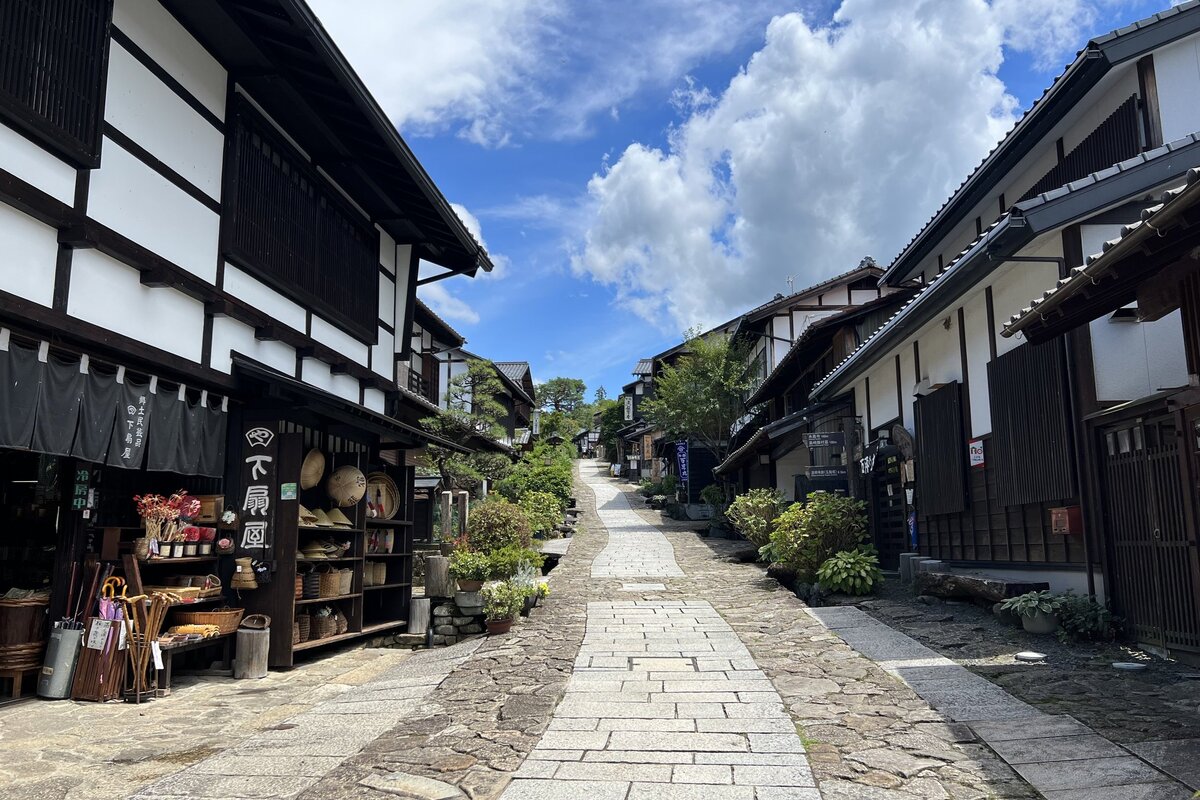
I also enjoyed leaving the main street to visit a local temple, Manpuku-an Eishoji (万福庵 永昌寺), having a delicious Japanese dessert at Cafe Kappe (かっぺ), and stopping at the tourist information centre to pick up some interesting brochures on the Magome-Tsumago trail. At the tourist information centre, you can get a certificate for a small fee that can be stamped at the Magome and Tsumago information centres as proof of completion of the trail, which I found to be an excellent souvenir!
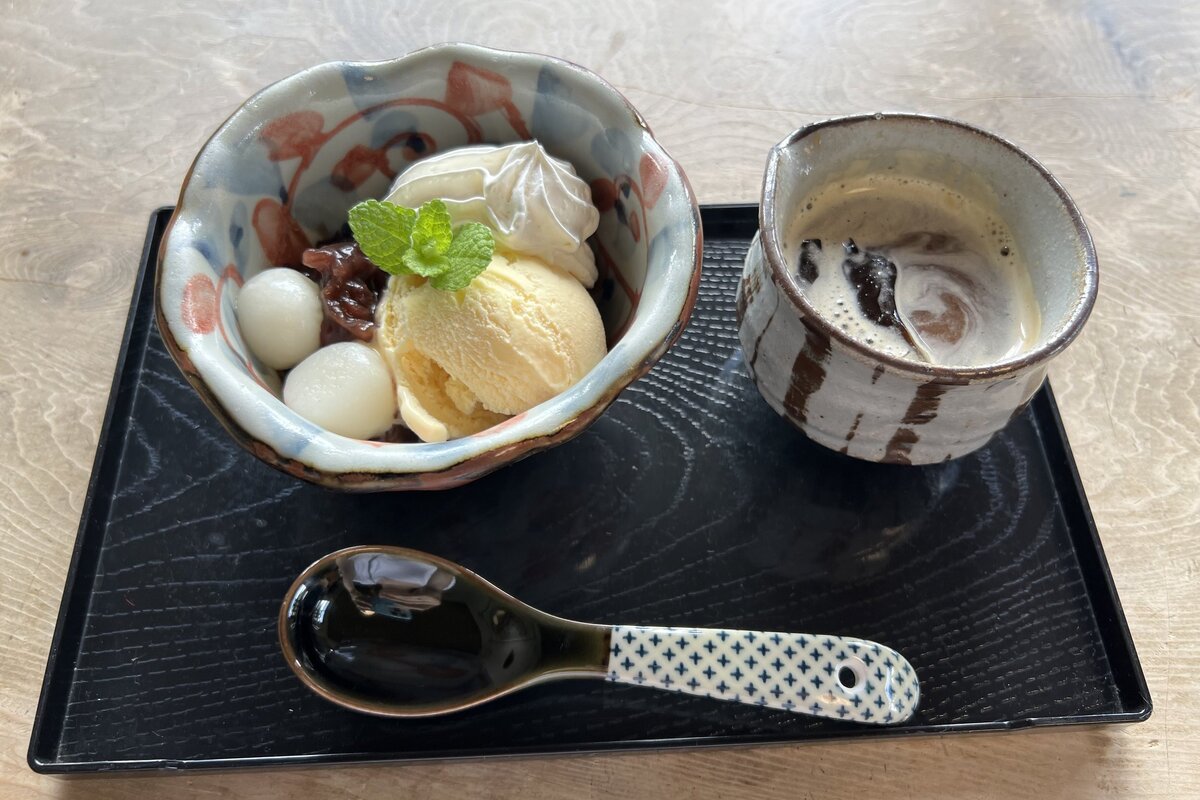 Sweets at Coffee zenzai (コーヒーぜんざい)
Sweets at Coffee zenzai (コーヒーぜんざい)
I felt giddy after just spending an hour in Magome and imagining what was ahead, as exploring this rural, hidden and atmospheric part of Japan, is by far my favorite thing to do when traveling in Japan.
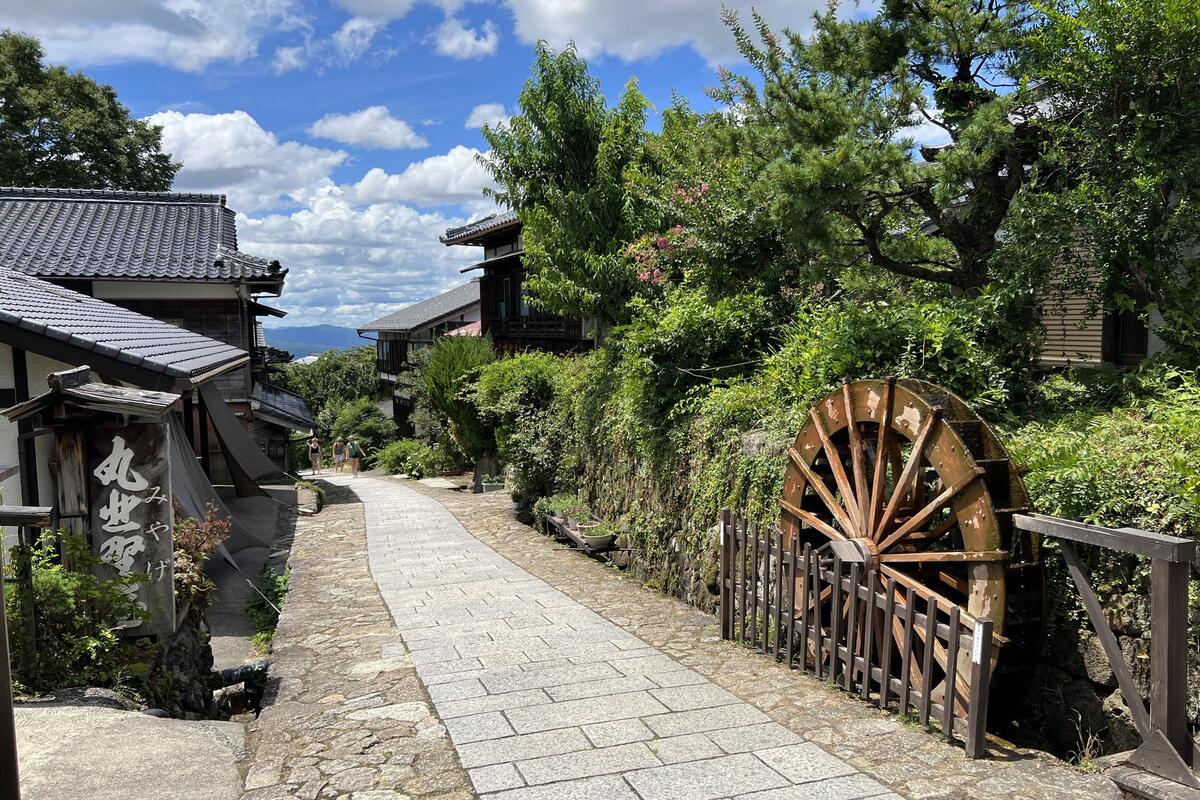 Magome
Magome
Follow the First Part of the Trail to the Tateba Tea House
Leaving Magome to follow the Nakasendo trail, you will begin to walk along forest paths, sometimes crossing the road or joining it temporarily. You cannot lose yourself as there are regular signs indicating the direction and distance left to Tsumago.
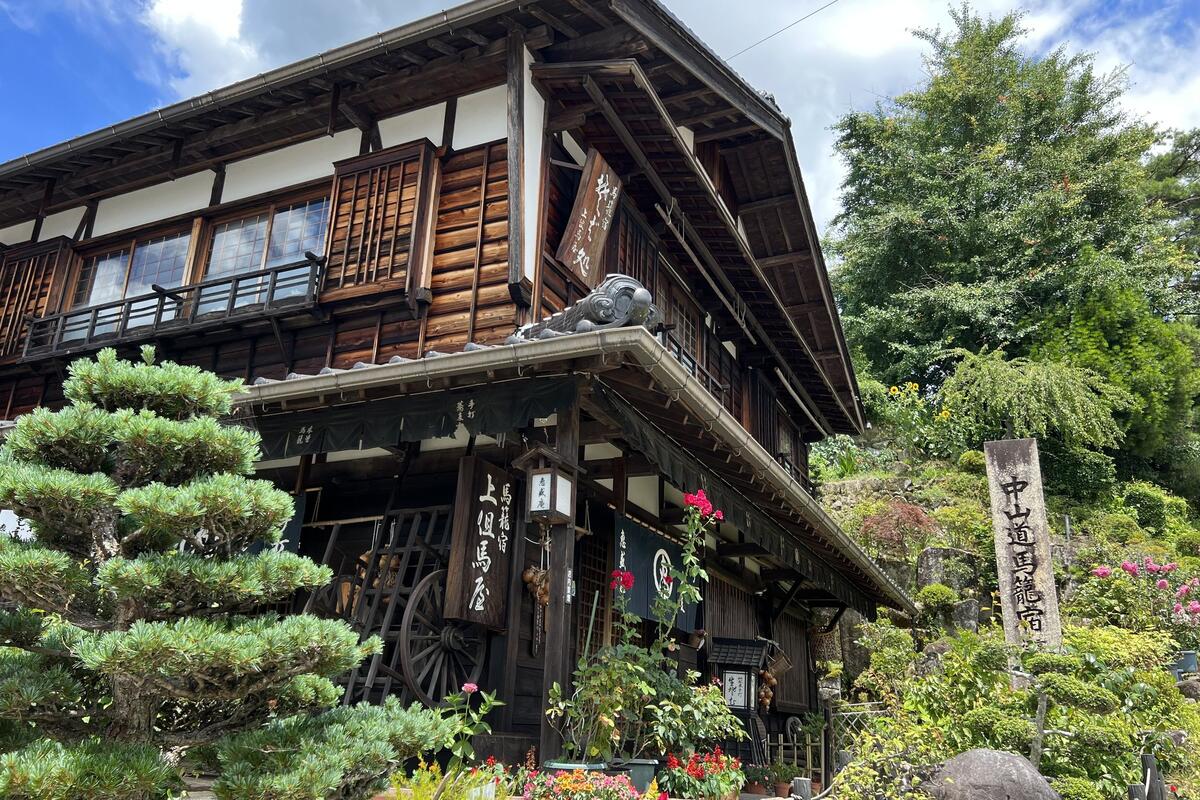
You’ll pass rice fields, bamboo groves and forest with some beautiful Japanese maples as well as some historical landmarks such as an old water mill.
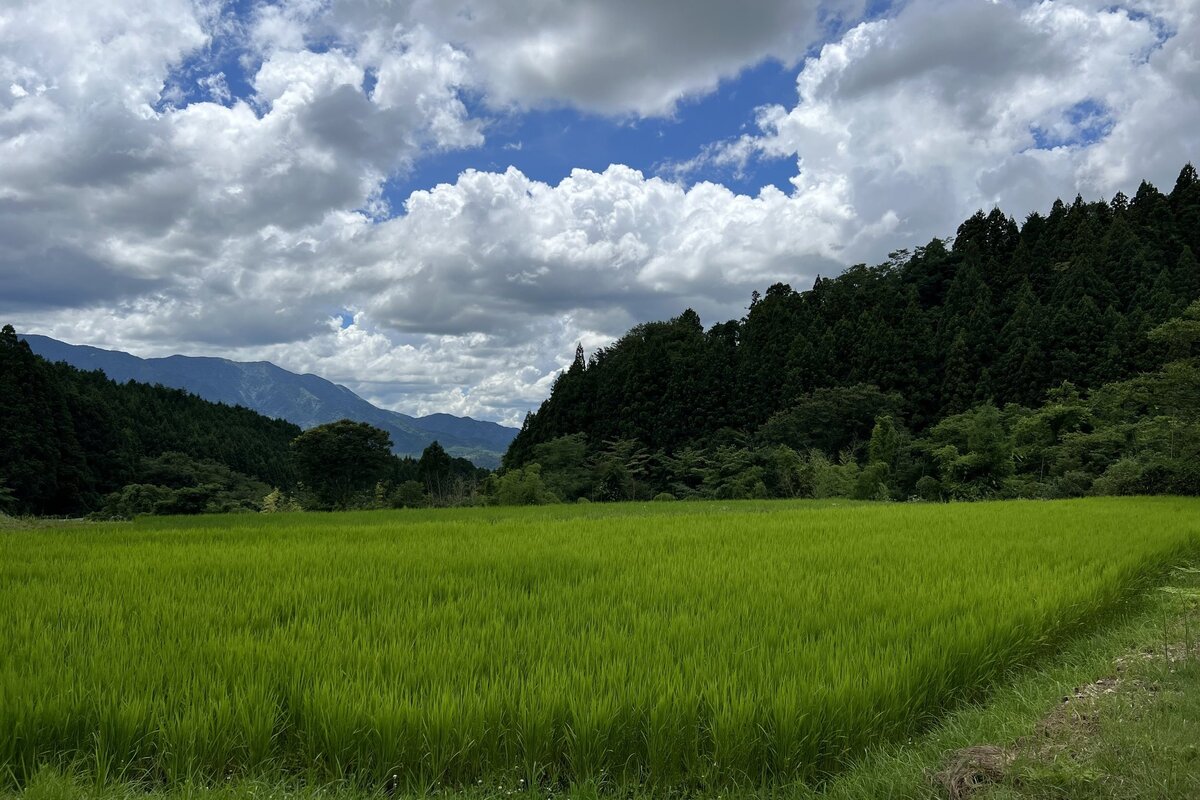 Rice fields
Rice fields
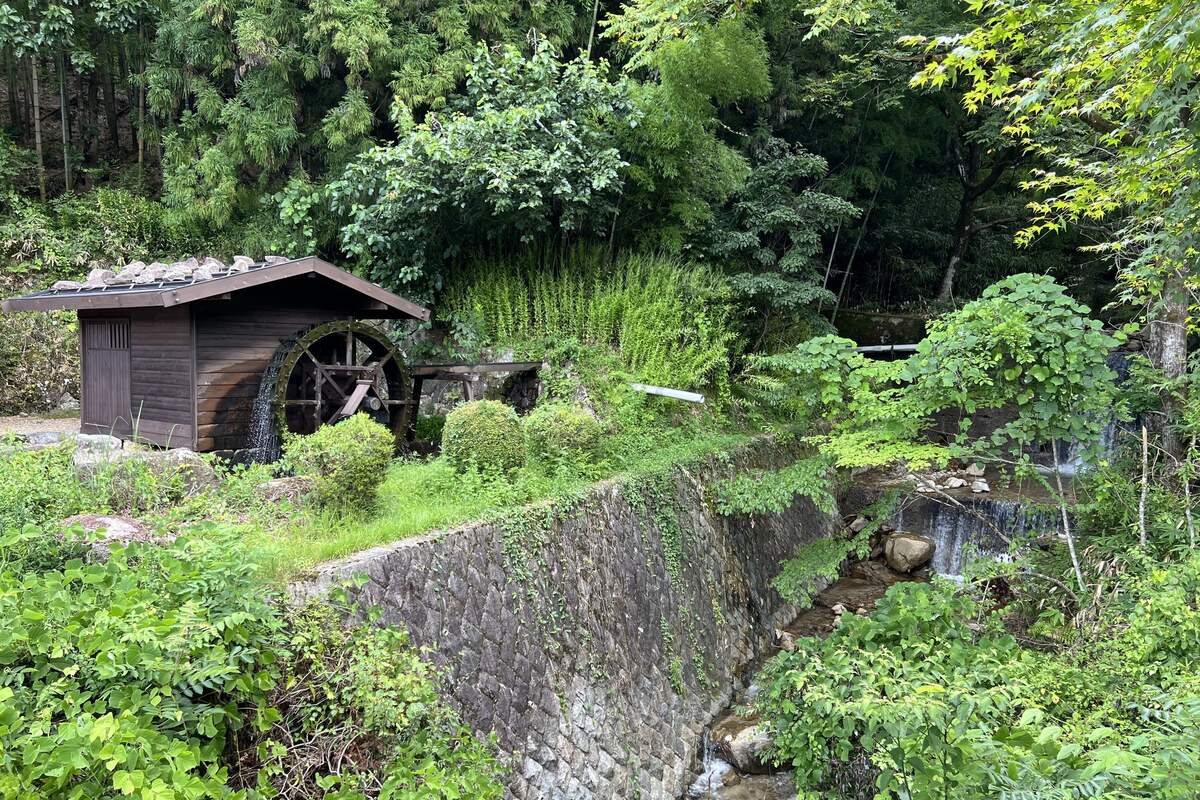 Ancient water mill
Ancient water mill
As you walk along, you’ll pass Juri (お食事処 樹梨), a local restaurant selling among others ice cream and kakigori (the ultimate Japanese summer treat), and a cute little garden called Owaki’s Garden, with some rustic sculptures and decorations, open to the public for those willing to make a little diversion. I remembered reading a sign from the owner of the garden saying that he wasn’t responsible for visitors’ disappointment, which I thought was brillant and definitely made me want to pass by.
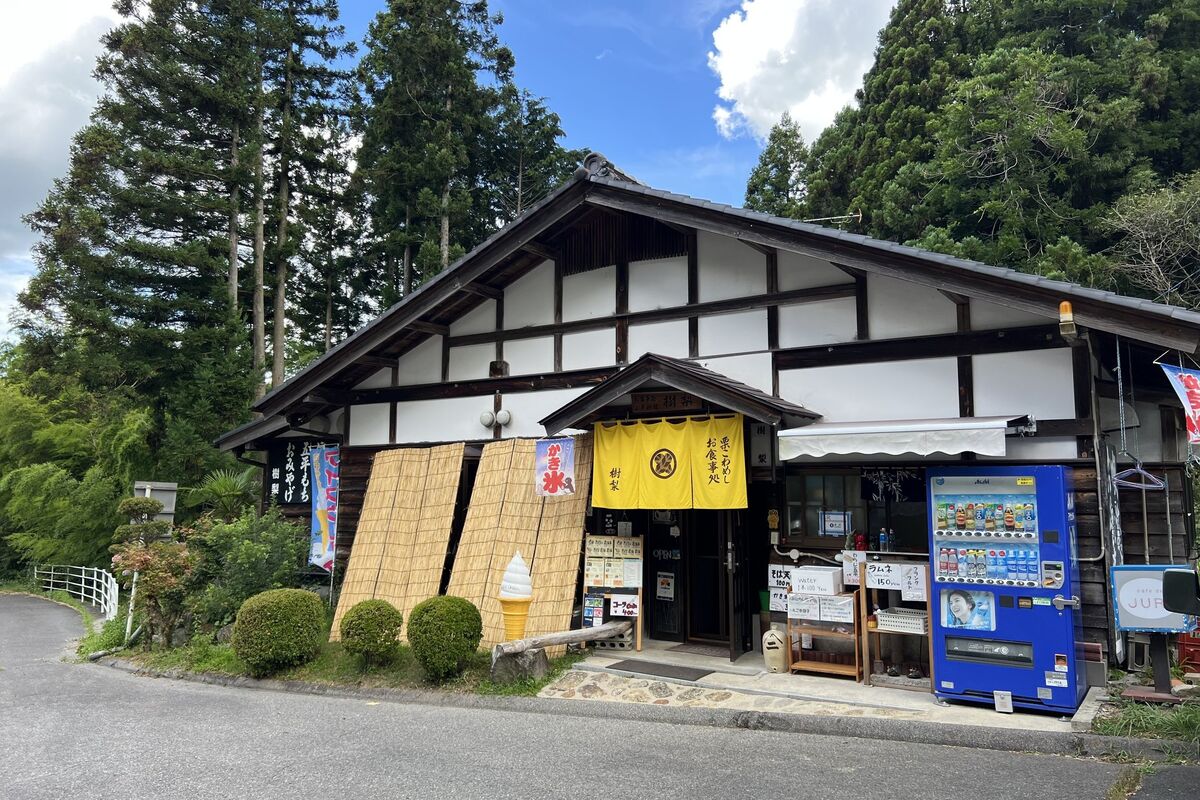 Juri restaurant
Juri restaurant
The walk that followed through a quiet, empty wooden village added to the impression of travelling back in time. As always, shrines lovers like I may want to do a small detour to check out the old and serene local shrine, Kumano-jinja (熊野神社). Japanese countryside village
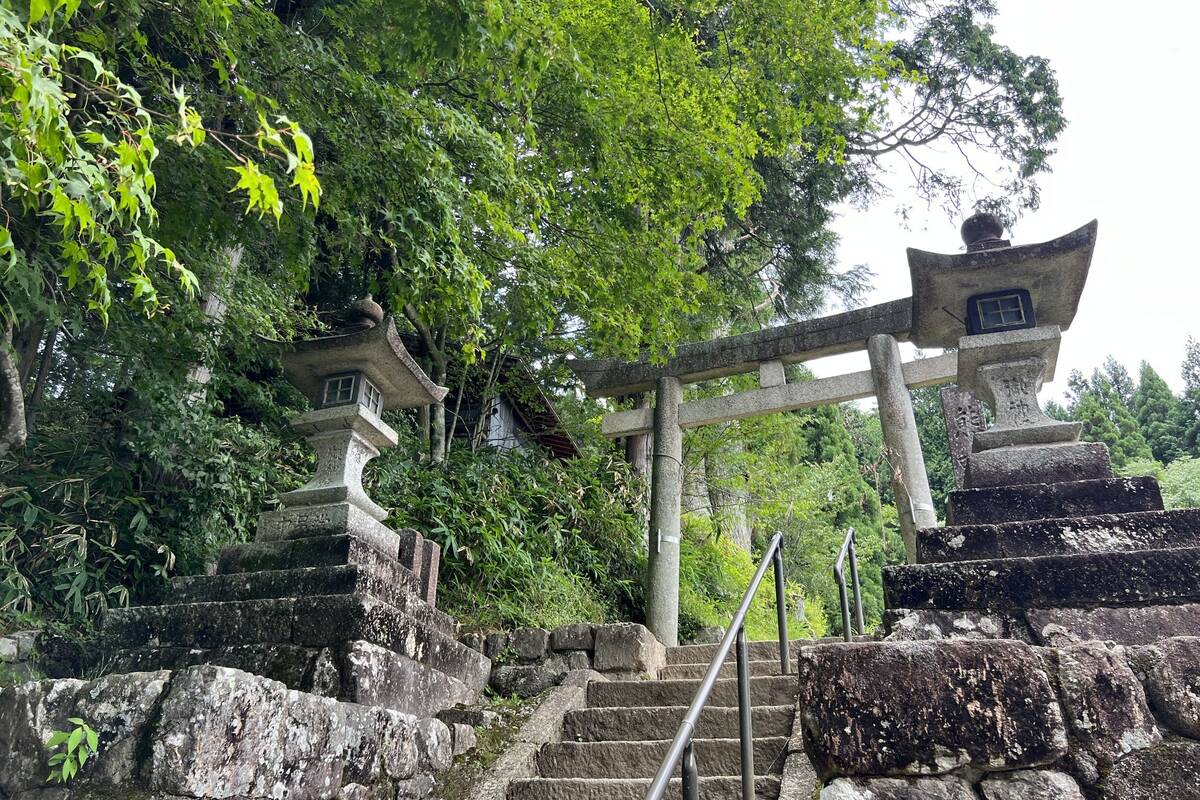 Kumanojinja Shrine
Kumanojinja Shrine
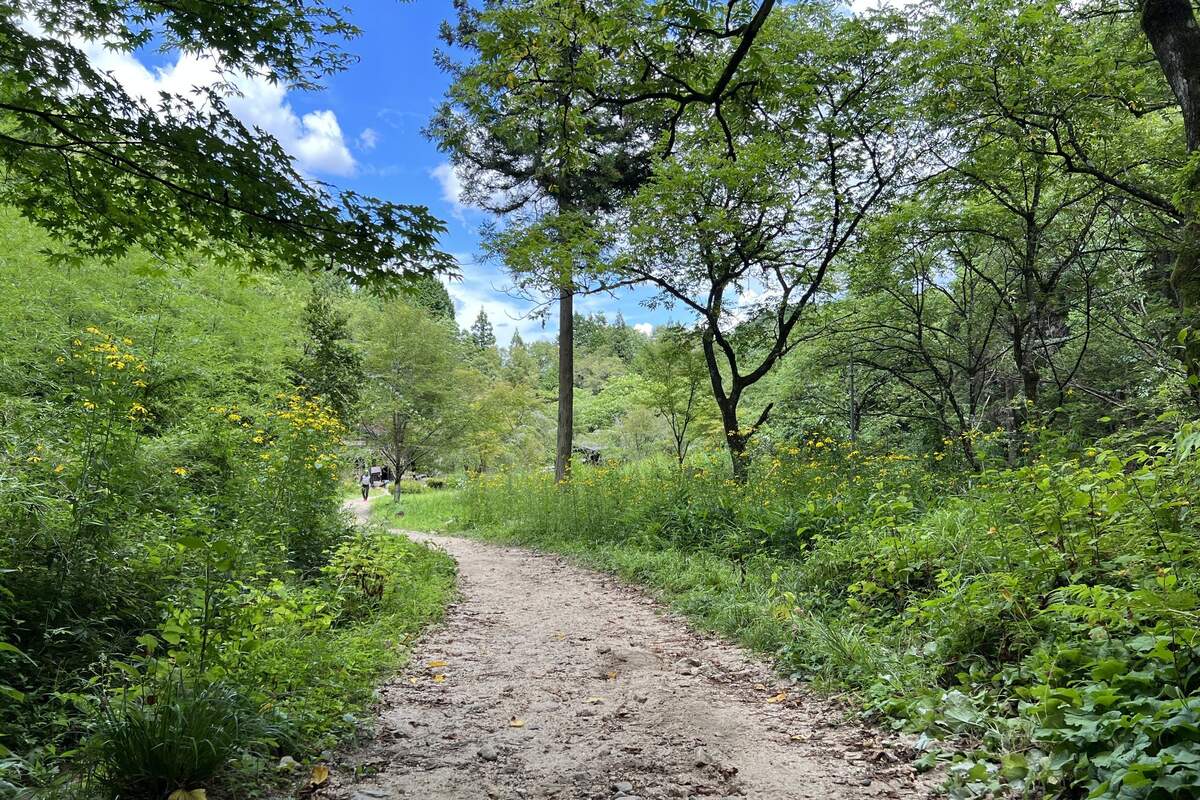 Small path
Small path
After a little more walking in the forest, you can take a well-deserved rest at the Tateba Tea House, a very old building managed by volunteers where you can enjoy a free cup of hot or cold tea (depending on the season) before continuing your journey.
Continue your Hike and Enjoy a Variety of Landscapes in the Japanese Countryside
Well-rested, time to continue your walk as you dive into a beautiful cedar and cypress forest. Alone with the soothing quietude of the trees, this section was one of my favorites of the day and I had a relaxing moment of “forest-bathing” (森林浴, shinrin-yoku).
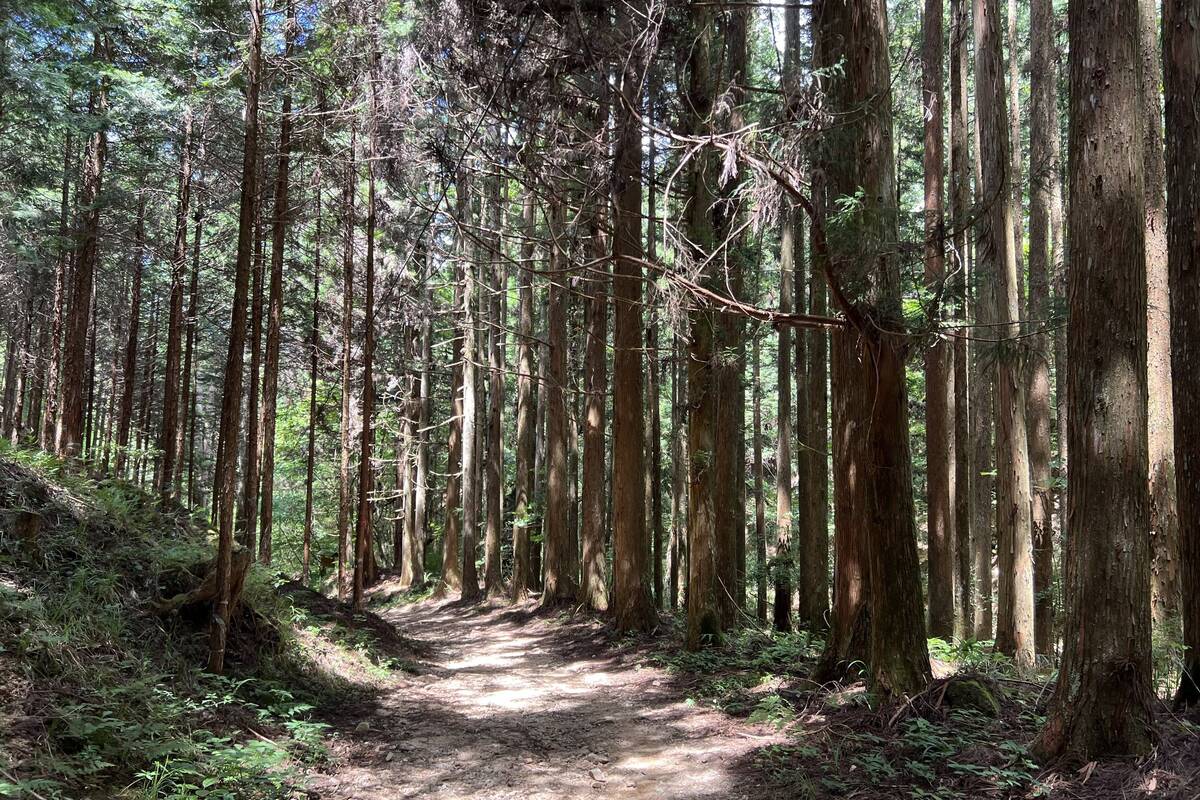 森林浴, shinrin-yoku
森林浴, shinrin-yoku
The next landmarks on your way are two waterfalls, Otaki and Metaki falls (男滝女滝, meaning male and female falls), next to each other. It’s another great place to take a short break and enjoy the relaxing sound of the waterfalls and the cooler air.
 Metaki Fall
Metaki Fall
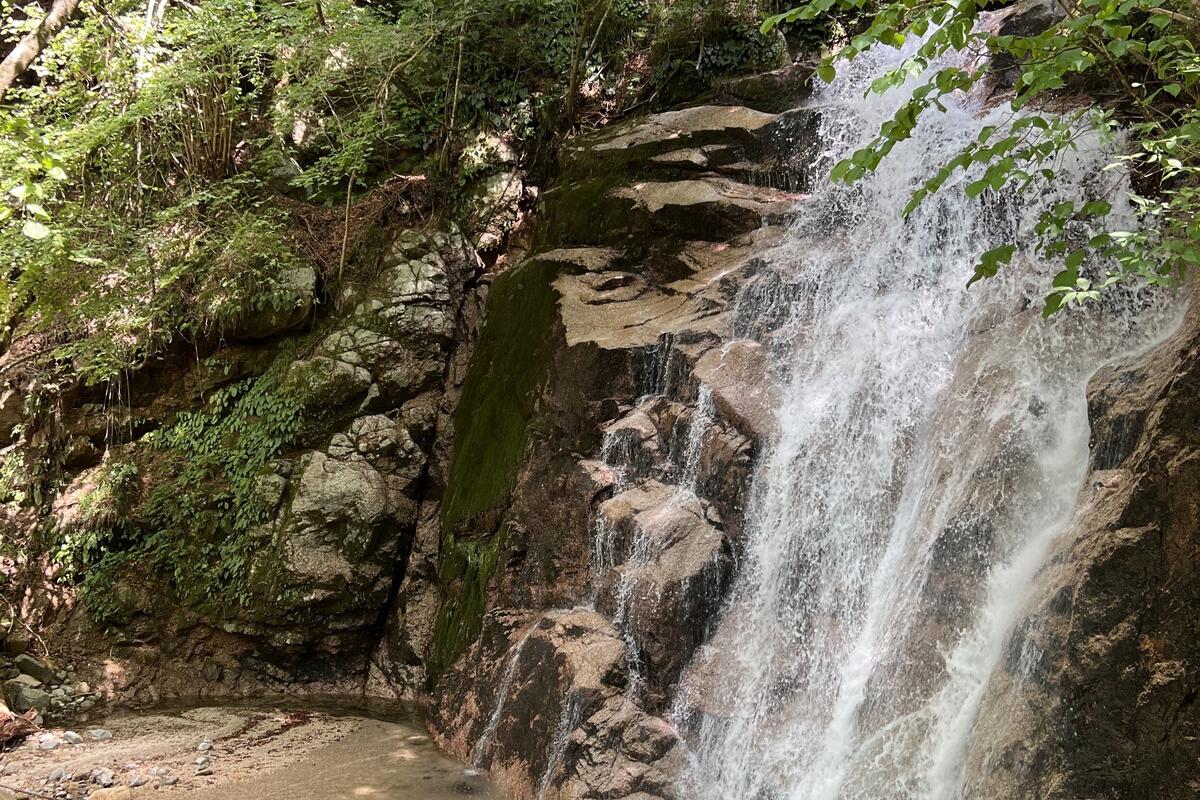 Otaki Fall
Otaki Fall
A little later, you come to a short section where the old stone path zigzags through the forest, which was one of the most picturesque parts of the walk.
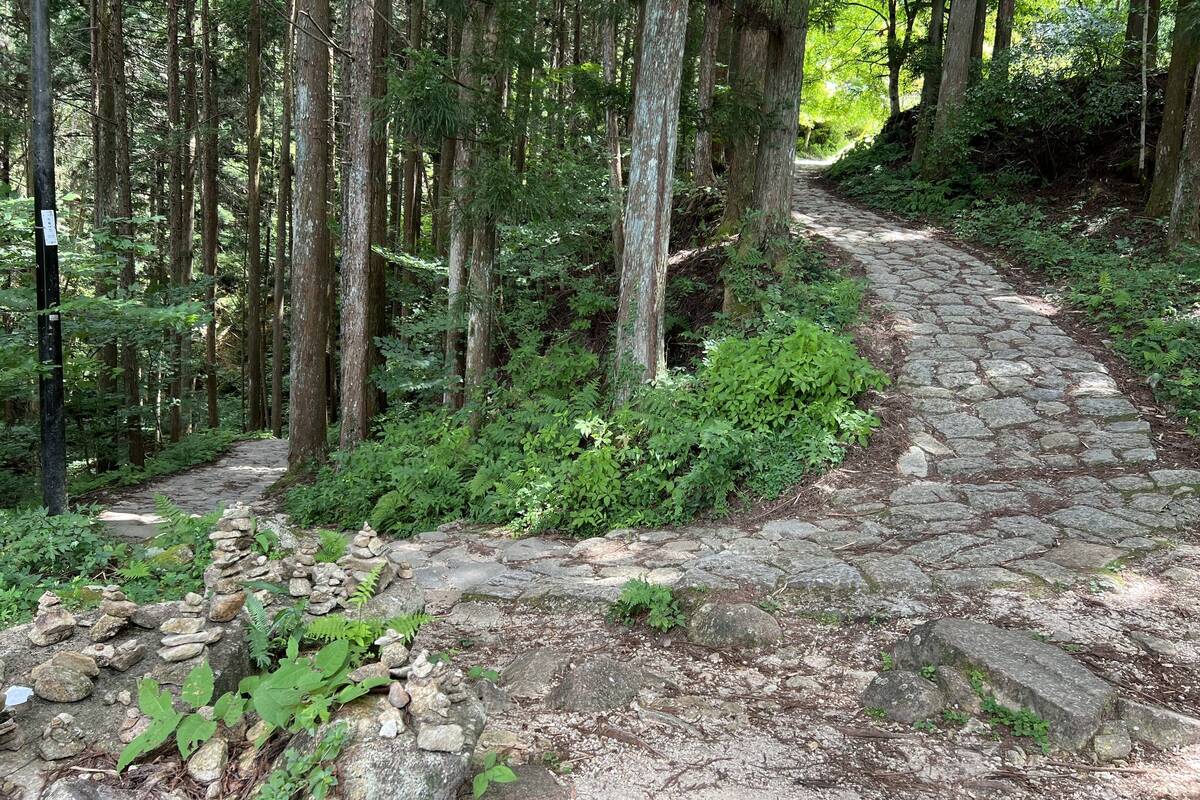
The rest of the trail passes through more countryside, with small villages, guesthouses (called “minshuku”), a couple of restaurants and farms.
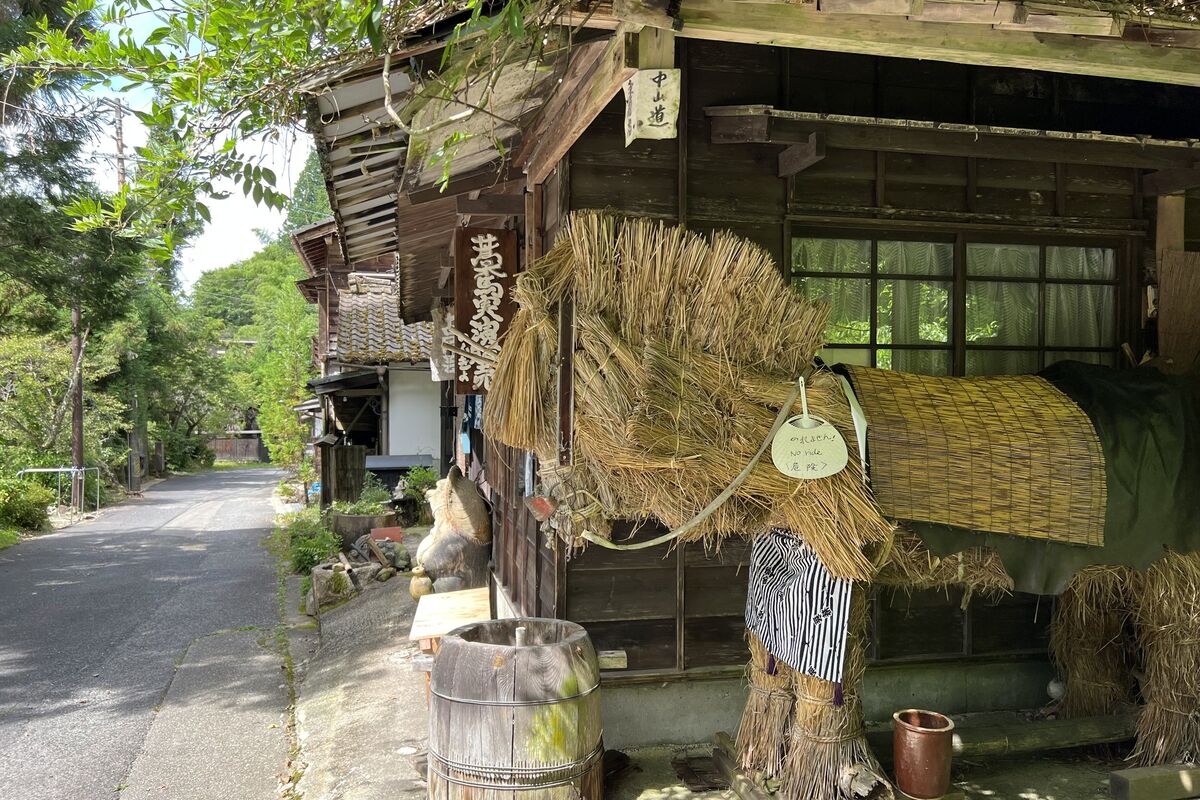
Arrive in Tsumago and Explore the Historic Post Town
In comparison to Magome, I would say that Tsumago has a more rustic feel. The absence of cars as well as tv antennas and electrical wires really allows you to travel back in time in the Edo era and enjoy the authentic atmosphere of this well-preserved town. Similarly to Magome, I can only recommend you to spend a while exploring Tsumago, with its historical buildings and traditional inns, souvenir stores, restaurants and tea shops. You can visit the Nagiso History museum, or famous historic ryokans, Honjin and Waki-Honjin (combinaison tickets are available). After the 8 km walk, I was delighted to fill up on delicious snacks such as baked rolls with chestnut paste and gohei-mochi rice cakes.
 Tsumago
Tsumago
 Tsumago
Tsumago
I also recommend you to pay a visit to the local temple in Tsumago, Kotokuji Temple (光徳寺), located on a hill from which you can enjoy a nice view of town and the valley. The temple contained some interesting objects, and you can get a goshuin stamp from the clerk in exchange for a small fee.
(OPTIONAL) Continue Hiking the Nakasendo to Nagiso Station
Still got energy to spare? Instead of taking a taxi or a bus from Tsumago, you can continue walking along the Nakasendo to Nagiso station, where you can catch a train to your next destination. The stretch from Tsumago to Nagiso is 3.5 km long and takes about 1 hour.
 Nagiso
Nagiso
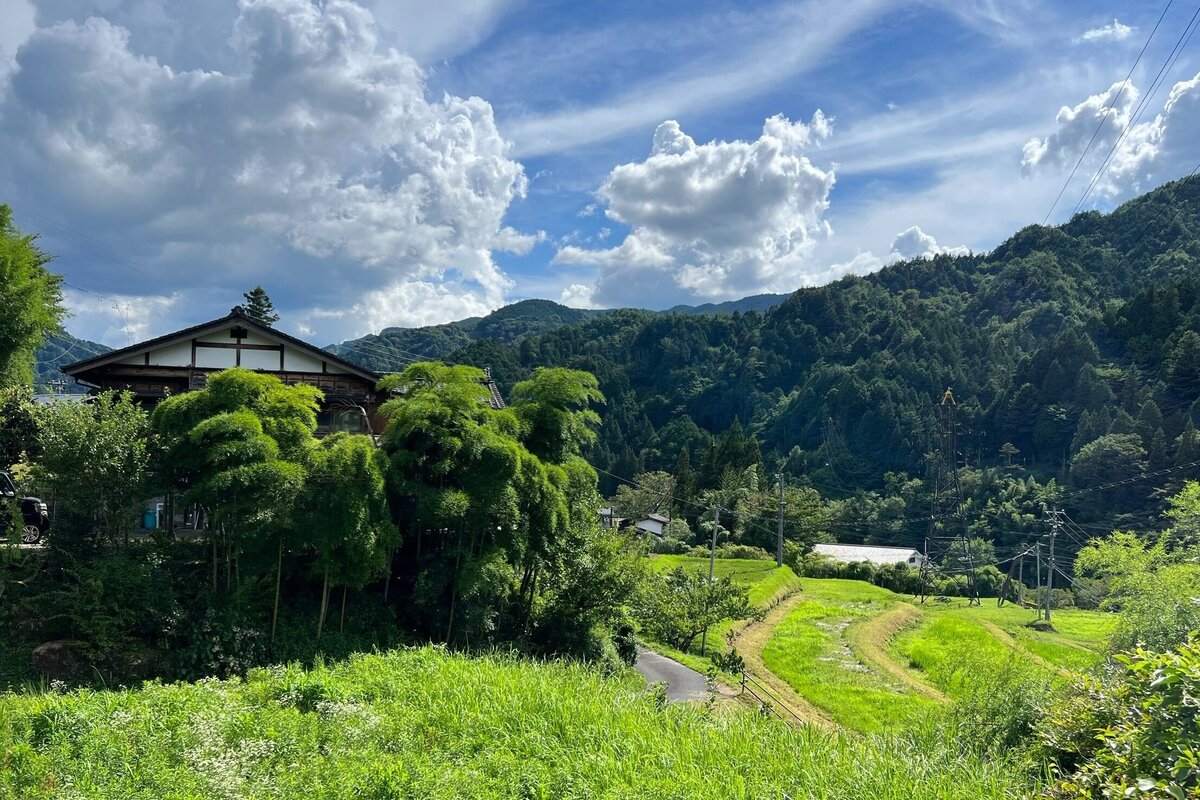 Nagiso
Nagiso
The landscape is not as impressive and diverse as the Magome-Tsumago section, but I enjoyed it as there were some nice views of the countryside and a few interesting landmarks along the way like the Tsumago castle ruins (妻籠城跡) and religious landmarks such as Shinmei Shrine (神明神社) and Kabuto Kannon (かぶと観音) and I enjoyed the calm and serenity of the moment, being the only one to have ventured on this part of the Nakasendo at the time.
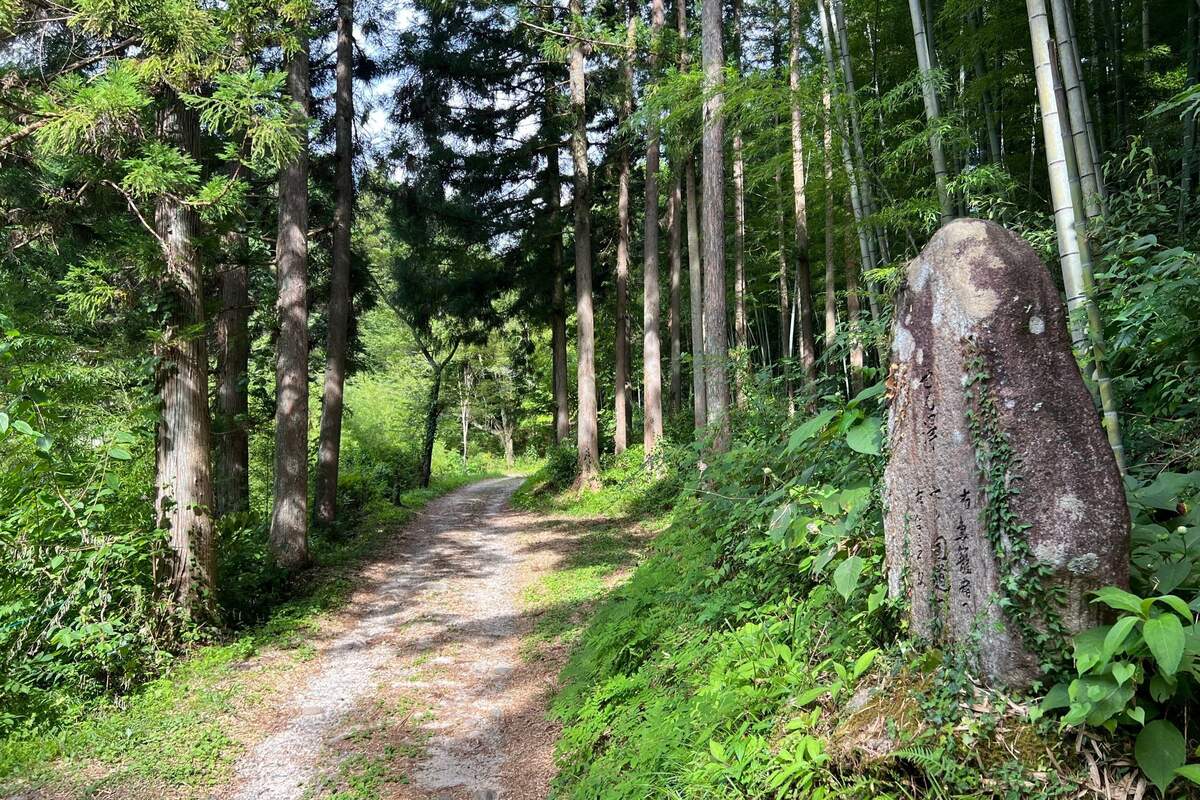

Hiking Tips to Know Before Doing the Magome-Tsumago Trail
Don’t forget to bring cash with you (including small notes). I’ll tell you about my personal experience: I didn’t realise that I only had a 10,000 yen note when I was about to ride the bus to Magome from Nagiso, and there were signs everywhere saying that 10,000 yen notes were not accepted, but the driver was kind to me and agreed to give me some change so that I could pay for my journey. Also, many of the shops in the two towns do not accept cards.
Make sure to visit the information centers in Magome and Tsumago for valuable information about the two towns and the hike.
Baggage forwarding system is available between Magome and Tsumago. I didn’t use it myself but saw several signs promoting this system. You can find more information at the tourist information centre of each town and on this touristic leaflet made by Nakatsugawa city.
Restrooms can be found along the trail at regular intervals between Magome and Tsumago but there are none between Tsumago and Nagiso station.
There are a few restaurants along the hike and a couple of vending machines, but I would recommend to bring water and snacks with you in case.
Getting From Tsumago Back to Kyoto
From the Tsumagobashi bus stop, board a bus to Nagiso (10 minutes, ¥300). At Nagiso, you can catch trains south to Nakatsugawa and Nagoya. The best train for this itinerary is the Shinano #16, which departs Nagiso at 3.54pm and arrives in Nagoya at 5.01pm. If you miss this train, you can catch the Shinano #18, which departs Nagiso at 4.55pm and arrives in Nagoya at 6.05pm. If you miss these, your best bet is to catch the next local train south to Nakatsugawa, and then switch to another train there that will take you onward to Nagoya. Consult with the stationmaster about the best times and trains.
From Nagoya, catch any Kodama or Hikari shinkansen heading west to Kyoto and Osaka.
Recommended Accommodation in Magome and Tsumago
Needless to say, doing the Nakasendo as a daytrip from Kyoto makes for a long and busy day. It’s much better to slow down and spend one night in Magome or Tsumago. This allows you to enjoy the rural atmosphere and relax back in Kyoto rested and refreshed. Here are a few recommended lodges in Magome:
- Tajimaya
This inn, which is located in the heart of Magome, is a lovely place to stay. The rooms and food are Japanese style and the owners are very welcoming. It’s highly recommended! - Magome Chaya
Also in Magome, this is a decent choice if Tajimaya is booked out.
Hints for Enjoying the Nakasendo
- It can be very hot and humid in summer. Dress appropriately, wear a wide-brim hat, and consider bringing a dry shirt for the return trip.
- Bring plenty of water, especially on hot days.
- Food is available en route at the Tateba-jaya Tea House, but you should consider buying snacks before you start hiking in Nakatsugawa, Magome or Tsumago.
- Check the local weather before you go. If necessary, call the Natatsugawa Tourist Information Center on +81-(0)573-62-2277 to check if there is snow on the trail, which is possible between October and April.
More Useful Japan Hiking Information
- Mt Fuji Climbing Guide
- Best Kyoto Hikes
- Hiking in the Japan Alps: Kamikochi to Mt Yari-ga-Take via the Daikiretto Traverse
- The Kumano Kodo Walking Trail: A Guide with Maps
- Walking the Nakasendo from Kyoto
- Hiking In Japan — A Full Guide
Kyoto Vacation Checklist
- For a quick overview, see my First Time In Kyoto guide.
- Check if a visa is required for Japan
- Check Kyoto accommodation availability on Booking.com and Agoda.com.
- Buy Japan Rail Tickets and Shinkansen Tickets Online.
- For tips on where to stay, see Where To Stay In Kyoto.
- See my Packing List For Japan.
- Purchase an eSim or SIM card for Japan.
- Compare flight prices on Skyscanner.
- Consider a Japan Rail Pass - see if it’s worth for you.
- Consider a travel insurance.